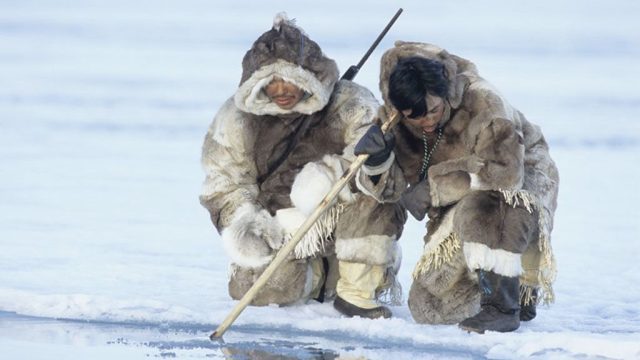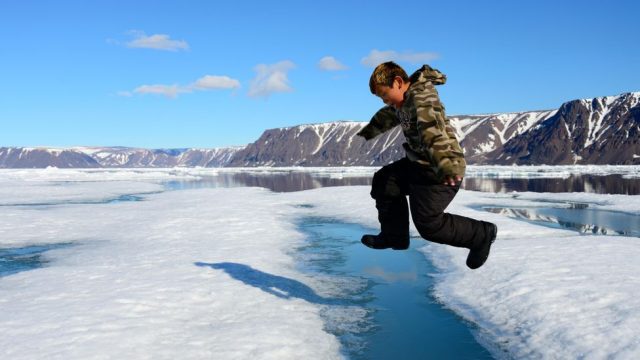Climate changes are affecting entire communities around the globe, whether by reducing their living spaces, impacting their diet, and now even changing centuries of tradition and way of life. On such case study are the Inuit people, who have long been famous for their ability to adapt to extreme weather in the Arctic.
In the village of Pond Inlet, a community of 1,600 people is trying to adapt to changing climate between the mountains. Years ago, temperatures in winter dropped even below -50C (-58F), but nowadays, the average temperature reaches -35C (-31F) which affects the oceans on which the Inuit livelihood depends.
The community has long relied on the elderly members which shared their knowledge of predicting changes in the weather, but now these traditions could be lost as climate changes make these predictions inconsistent.
Since the Arctic region is warming faster than the rest of the world, the Inuit population fears not only a loss of their traditions but also of their living habitat and lifestyle.
The ice patches are melting, which also puts the inhabitants of the region in danger, leaving them exposed to threats and hunting accidents.
 Inuit men hunting in traditional dress, Canada
Inuit men hunting in traditional dress, Canada
“Everything we do involves the ocean and sea ice, which is highly affected by climate change,” says Natasha Simonee, a member of the Inuit community in Pond Inlet.
The Arctic, Earth’s northern polar region, is warming about twice as fast as the rest of the world – and is home to four million people who are experiencing a particularly rapid and disruptive form of climate change. Among these Arctic residents are many indigenous groups, including Inuit, Saami and Chukchi people, to name a few.
This includes time-honoured practices that few outside the Arctic have heard of. Alex Whiting – who is not Inuit but has lived in the Arctic for around 30 years – lives in the town of Kotzebue, or Qikiqtaġruk, in Alaska. Whiting explains that the traditional practice of burying fish in the ground and leaving it there to ferment, which extends the life of the foodstuff, is harder to do now than it once was. The technique relies on reliably cold temperatures throughout the winter.
“Those kind of skills are already becoming really tough to pass on to younger generations,” says Whiting.
He also notes how important it is to be able to transmit knowledge about the safe crossing of ice patches. Experienced locals know how to detect cracks in the ice based on its colour or texture, or via careful taps with an ice pick. But societal changes and shorter hunting seasons mean only a few expert seal hunters venture out into such conditions these days.
“There’s still a kid or two that is apprentice in that kind of stuff,” says Whiting. “It hasn’t completely died out.”
A research published in August 2021
Co-production of knowledge reveals loss of Indigenous hunting opportunities in the face of accelerating Arctic climate change
Profound sea ice loss is rapidly transforming coupled social-ecological Arctic marine systems. However, explicit impacts to harvesting of traditional resources for coastal Indigenous communities remain largely unquantified, particularly where the primary research questions are posed by the Indigenous community as a result of emerging approaches such as knowledge co-production. Here, we directly link reduced sea ice coverage to decreasing harvesting opportunities for ugruk (bearded seal, Erignathus barbatus) as a component of a partnership among a multidisciplinary team of scientists, Indigenous Elder Advisory Council, and sovereign Indigenous tribe in northwest Alaska, USA.















